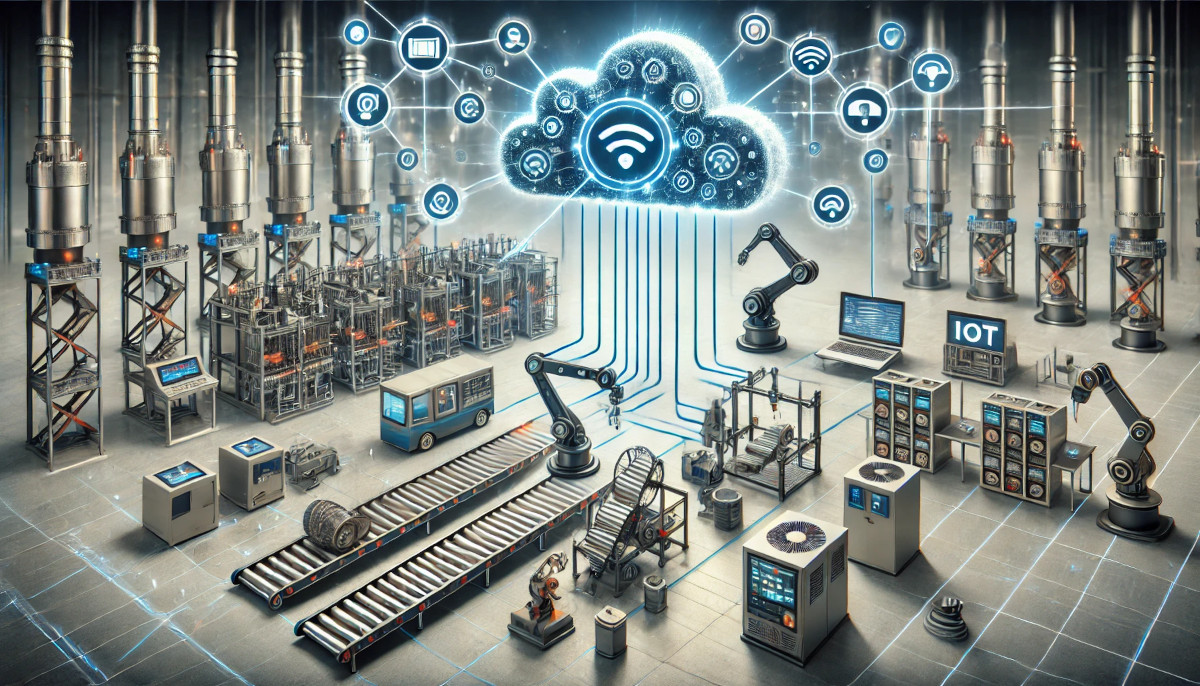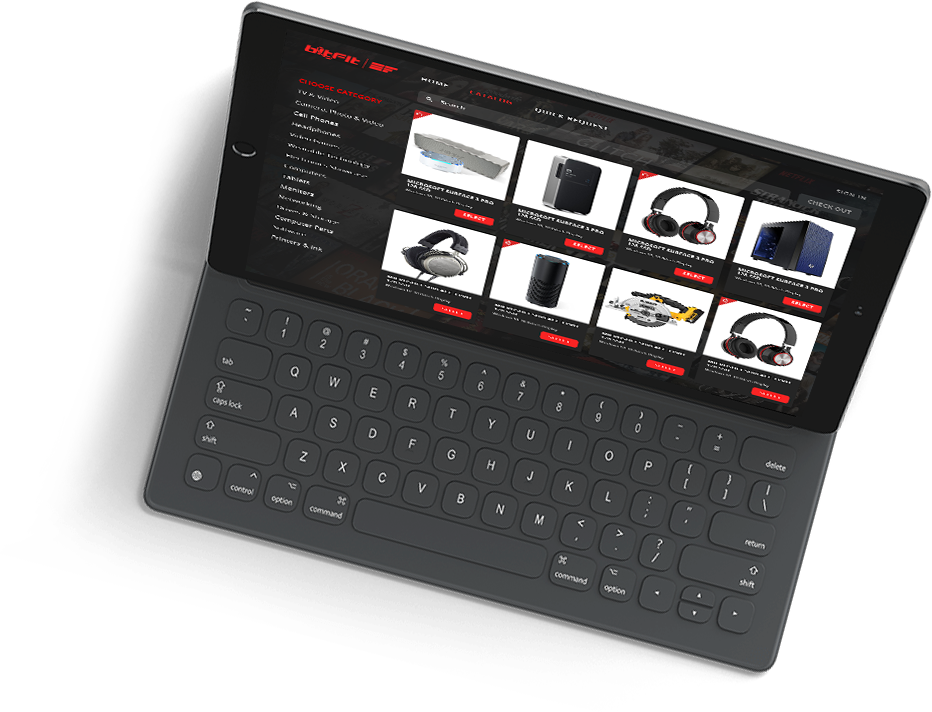
The Internet of Things (IoT) has dramatically transformed numerous industries, with one of the most significant impacts seen in asset management. By definition, IoT refers to the network of interconnected devices that communicate and share data through the Internet. Asset management, a critical practice across various sectors, benefits immensely from IoT, offering enhanced efficiency, accuracy, and cost-effectiveness. This article delves into how IoT revolutionizes asset management, examining its benefits, challenges, and future implications.
The Evolution of Asset Management
Historically, asset management was labor-intensive, relying on manual tracking and maintenance schedules that often led to inefficiencies and errors. The advent of computerized systems brought some improvement, but the real transformation began with IoT technologies. These innovations have enabled a more dynamic approach to managing assets, where real-time data and predictive analytics have become the cornerstone of the discipline.
Benefits of IoT in Asset Management
Integrating Internet of Things (IoT) technology into asset management systems offers transformative benefits across several key areas. These benefits enhance operational efficiencies, drive significant cost savings, and improve asset longevity. Below are detailed insights into the significant advantages of utilizing IoT in asset management:
Real-Time Data Collection and Monitoring
Immediate Insights: IoT devices equipped with sensors allow for continuous monitoring of asset conditions. This capability means that businesses can receive instant updates on machinery, equipment, or inventory status, leading to more informed decision-making.
Enhanced Visibility: Managers comprehensively view all assets across different locations. This visibility is crucial for optimizing resource use and improving response times to issues.
Predictive Maintenance
Anticipating Failures: Algorithms can predict when an asset is likely to fail or require maintenance through data collected by IoT devices. This predictive capability shifts maintenance strategies from reactive to proactive, preventing costly downtime and extending the lifespan of assets.
Optimized Maintenance Schedules: IoT enables the creation of dynamic maintenance schedules that adapt based on actual asset usage and condition rather than fixed intervals. This approach ensures that maintenance resources are utilized more efficiently, reducing unnecessary interventions and focusing efforts where they are most needed.
Improved Asset Utilization and Efficiency
Asset Tracking: IoT technologies facilitate precise tracking of assets throughout their lifecycle. This tracking helps in understanding usage patterns, which can inform better allocation and deployment strategies and ensure that no asset is underutilized or overstrained.
Operational Efficiency: With real-time data, organizations can streamline operations, reduce bottlenecks, and enhance productivity. For example, IoT can connect various parts of the manufacturing production line, automatically adjusting processes based on real-time demand and supply data.
Cost Reduction and ROI Enhancement
Lower Operational Costs: IoT-driven asset management significantly reduces the costs associated with manual monitoring and maintenance. Automating these processes allows businesses to allocate human resources to more critical tasks, thus lowering operational expenses.
Energy Savings: Smart IoT devices can also lead to substantial energy savings by optimizing power use based on actual needs rather than fixed schedules. For instance, IoT sensors can automatically adjust lighting and heating in a facility based on occupancy and environmental conditions.
Decreased Capital Expenditures: Improved asset management decreases the frequency and cost of replacing equipment. Better maintained and efficiently used assets have a longer useful life, which delays the need for new investments.
In summary, the adoption of IoT in asset management improves immediate operational metrics and contributes to long-term strategic benefits. As companies continue to explore and expand their IoT capabilities, the potential for transformation in asset management grows, paving the way for smarter, more efficient, and cost-effective operations.
Challenges and Considerations
While the Internet of Things (IoT) offers transformative benefits in asset management, its adoption and implementation come with a set of challenges and considerations that businesses must navigate carefully. Here’s a detailed exploration of the primary hurdles and critical factors to consider when integrating IoT technologies into asset management systems:
Security Concerns
Data Breaches: IoT devices generate and transmit large volumes of data, including sensitive information about business operations and assets. Often numerous and geographically dispersed, these devices can present multiple entry points for cyber-attacks.
Privacy Issues: In industries like healthcare, where asset tracking might involve patient data, ensuring privacy compliance (such as HIPAA in the U.S.) is crucial. The increased data flow necessitates robust privacy safeguards to protect personal information.
Network Security: The interconnected nature of IoT devices means that the security of one device impacts the entire network. Establishing robust network security protocols and regular updates is essential to prevent vulnerabilities.
Integration Challenges
Legacy Systems: Many organizations operate on legacy systems that are not initially designed to integrate with IoT. Retrofitting these systems or ensuring seamless data flow between old and new technologies can be complex and costly.
Interoperability: With a wide variety of IoT devices and platforms available, ensuring they can communicate and work together effectively is a significant challenge. Standardization of protocols and data formats is key to solving interoperability issues.
Scalability Issues
Managing Large Data Volumes: As the number of IoT devices increases, so does the volume of data collected. Efficiently managing this data – ensuring it can be stored, processed, and analyzed effectively – poses a challenge, especially for growing businesses.
System Upgrades and Expansion: Scalability must be considered in the initial design of IoT systems to ensure that as the business grows, the IoT infrastructure can grow with it without requiring complete overhauls.
Legal and Regulatory Compliance
Compliance with Regulations: IoT deployments in asset management must comply with various industry-specific regulations, which may dictate how data is collected, stored, and used.
Global Operations: For businesses operating in multiple countries, compliance with international laws and regulations regarding data protection and IoT devices becomes more complex and demanding.
Training and Personnel Adaptation
Skill Gaps: The shift to IoT-enabled asset management often requires skills that existing personnel may not possess, such as data analytics, network management, and cybersecurity.
Training Programs: Developing comprehensive training programs for staff to adapt to new technologies is crucial. These programs must be ongoing to keep pace with technological advancements.
Cost Implications
Initial Investment: The upfront cost of deploying IoT solutions can be significant, especially for large-scale implementations. This includes the cost of devices, network infrastructure, integration, and software systems.
Ongoing Maintenance: Beyond initial setup, ongoing expenses related to maintaining and updating IoT systems must be anticipated. These costs include software updates, device replacements, and security enhancements.
Reliability and Accuracy
Device Reliability: IoT devices must be robust and reliable, especially those exposed to harsh environments. Failure of these devices can lead to data loss and operational disruptions.
Data Accuracy: It is crucial to ensure the accuracy of data collected by IoT devices. Only accurate data can lead to informed decisions that adversely affect asset management and overall business operations.
Overcoming Challenges
To overcome these challenges, businesses should:
- Prioritize cybersecurity and develop a comprehensive security strategy with regular updates and patches.
- Choose IoT solutions compatible with existing systems or invest in middleware bridging different technologies.
- Plan for scalability from the outset, selecting flexible solutions that can be expanded or modified as needed.
- Invest in training and development programs to equip their workforce with the necessary skills to manage and benefit from IoT-driven asset management.
Addressing these challenges effectively will enable organizations to harness the full potential of IoT in asset management, ultimately leading to enhanced operational efficiency and competitiveness.
Best Practices for Implementing IoT in Asset Management
Implementing the Internet of Things (IoT) in asset management is a complex process that requires strategic planning and careful execution. Organizations should follow a set of best practices to maximize the benefits and minimize potential pitfalls. Here’s a detailed look at these practices to guide successful IoT implementation:
Strategic Planning and Goal Setting
Define Clear Objectives: Before implementing IoT, it’s crucial to have clear, measurable goals that align with the organization’s overall business strategy. This might include reducing maintenance costs, improving asset utilization, or enhancing customer satisfaction.
Assess Current Infrastructure: Evaluate the existing asset management processes and infrastructure to identify gaps and opportunities where IoT can bring improvements.
Develop an IoT Roadmap: Create a phased plan that outlines how IoT will be rolled out, including pilot projects, full-scale implementation, and future expansions.
Choosing the Right Technology and Partners
Select Appropriate IoT Devices: Choose sensors and devices that best suit the specific types of assets being managed. Consider factors such as durability, accuracy, and energy consumption.
Partner with Reliable Vendors: Work with technology providers who have proven expertise and reliability in IoT solutions. They should offer robust support and have a strong track record in your industry.
Integration Capabilities: Ensure that the IoT platform can integrate smoothly with existing systems, such as ERP or asset management software, to leverage data across the organization.
Data Governance and Security Protocols
Implement Robust Security Measures: Given the vulnerabilities associated with IoT, implementing advanced security protocols is non-negotiable. This includes encryption, regular software updates, and secure authentication methods.
Data Privacy Compliance: Adhere to relevant data protection regulations to protect sensitive information and avoid legal complications.
Data Management Strategy: Develop a clear data management policy that addresses data collection, storage, access, and analysis. This ensures data is used effectively and responsibly.
Scalability and Flexibility
Plan for Growth: Design the IoT system with scalability in mind, allowing for easy additions and modifications as the business grows and technology advances.
Flexible Architecture: Opt for modular IoT architectures that integrate new technologies and accommodate changing business needs without extensive overhauls.
Monitoring and Continuous Improvement
Real-Time Monitoring: Use IoT systems to continuously monitor asset performance. This provides immediate insights into operations and helps make data-driven decisions.
Regular System Evaluations: Conduct periodic reviews to assess the IoT system’s performance against the set objectives. This helps identify areas for improvement and fine-tune the system.
Training and Change Management
Employee Training: Provide comprehensive training for all relevant employees, from IT staff to operational managers, ensuring they can effectively use the new IoT systems.
Change Management: Implement change management practices to help staff adjust to new technologies and processes. This includes managing resistance to change and fostering a culture of innovation and continuous learning.
Leveraging Advanced Analytics
Use Data Analytics: Deploy advanced analytics tools to interpret the vast amount of data IoT devices generate. These insights can lead to more informed decisions regarding asset management.
Predictive Analytics: Use predictive models to forecast failures and schedule maintenance, reducing downtime and extending asset lifespans.
Ensuring System Reliability
High-Quality Components: Invest in high-quality IoT components to reduce the risk of device failures that could disrupt data collection and asset management.
Regular Maintenance: Schedule regular maintenance checks for IoT devices to ensure they are functioning correctly and efficiently.
By adhering to these best practices, organizations can ensure a smooth and successful implementation of IoT in asset management. These strategies not only facilitate the integration of new technologies but also help organizations to harness the full potential of IoT to improve efficiency, reduce costs, and enhance decision-making in asset management.
Conclusion
In conclusion, integrating the Internet of Things (IoT) into asset management represents a revolutionary shift, redefining the efficiency and efficacy of operations across various sectors. By enabling real-time data collection, predictive maintenance, and enhanced asset utilization, IoT empowers organizations to streamline operations, achieve significant cost reductions, and improve overall asset longevity. Despite the challenges, including security concerns, integration complexities, and scalability issues, the strategic implementation of IoT guided by best practices can lead to transformative outcomes. As businesses continue to evolve with technological advancements, the proactive adoption of IoT in asset management stands as a testament to the commitment towards smarter, more efficient, and future-ready operational frameworks. This evolution not only addresses immediate operational needs but also sets the stage for long-term sustainable growth and competitiveness in an increasingly digital world.

